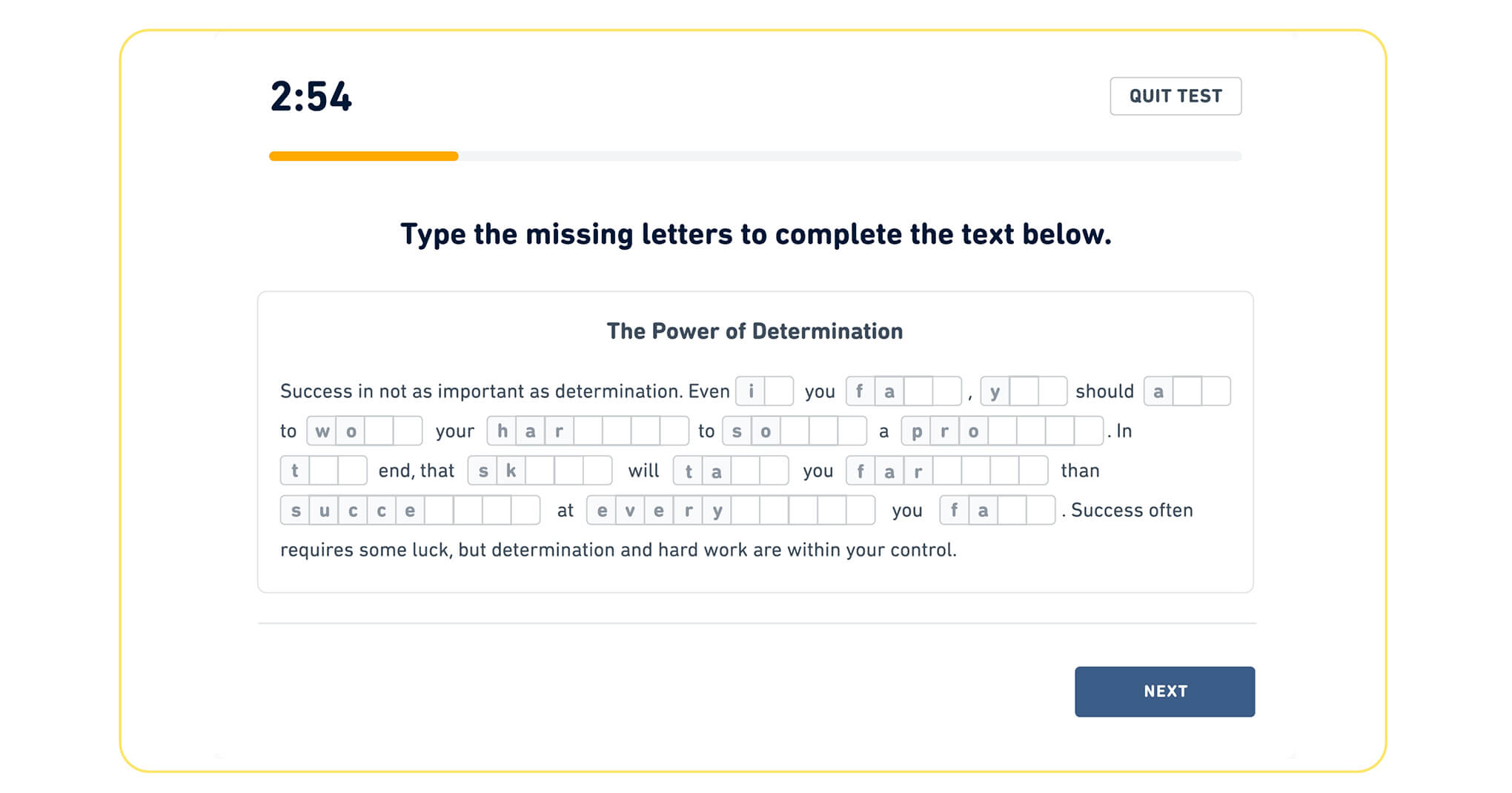Introduction
I am sure you already know that the Duolingo English Test is an affordable and effective way to measure your English proficiency.
But do you know about all of the Duolingo English Test question types?The Read and Complete question type is one of the most common on the Duolingo English Test, so it is important to know exactly how to answer it correctly.
By the end of this short article, you will learn five key tips for mastering the Read and Complete questions, plus our secret advanced strategies we only share with private students.
Let’s do it!
Or if you are just looking for some practice, go ahead and try a free practice question.


Over 100 Free DET Practice Questions
Here’s what you will learn:
Read and Complete Questions - Everything You Need to Know
For Read and Complete questions, you will have 3 minutes to read a short passage with a bunch of incomplete words. Your job is to complete the missing words and spell them correctly. Vocabulary knowledge is crucial for this particular question type.
It will contribute to your Literacy and Comprehension scores (Reading).
Details:
Time Limit
You have 3 minutes to complete all the missing words in the given passage.
Question Frequency
Expect to encounter 3 to 6 Read and Complete questions on test day.
Diverse Topics
The topics are impossible to predict, ranging from academic subjects like biochemistry to general articles about movie plots.
Passage Length
Passages usually contain between 40 to 100 words, with most falling in the 55 to 75 word range.
Adaptive Difficulty
The passages will begin simply, but if you perform well, they will become more difficult as you progress through the exam.
Quick Tips for Read and Complete Questions
- Answer Blanks in Order: Do not skip around when you are reading. Answer the questions in order so you can better understand the flow of the passage. If you do not know an answer, take a guess and come back to it later.
- Leave Time for Review: Try to give yourself at least 30 seconds at the end to scan the passage and check for any spelling mistakes.
- Read Aloud (Quietly): Whisper your answers to hear if they sound accurate. Sometimes, hearing how a word sounds helps more than just reading it silently.
- Do Now Worry About Punctuation: You are only responsible for typing in missing letters, do not worry about contractions, commas, or other punctuation marks.
- The First and Last Sentences Are Most Important: Carefully read the first and last sentences of the passage so you can understand the topic and narrow down the possible answers.
Read and Complete - Why You Need to Know the Subject
- Understanding Pronoun Referents: Don’t worry if you do not know the phrase “pronoun referent,” just pay attention to words like he, she, and other words that refer back to words or phrases in previous sentences. They will help you understand both the passage and the correct answer.
- Recognize the Subject: Be aware of different ways the same subject can be expressed, for example, saying “these giant cats” instead of “lions.” Check out the underlined parts in the excerpt below, they all refer to “The Mona Lisa.”
Read and Complete - Advanced Strategies
- First and Last Sentence Clues: The first and last sentences might even repeat words used as blanks in other sentences. Read them carefully to help you fill in all the missing words.
- Read Carefully Around Blanks: Examine the words immediately before and after a missing word to determine its part of speech (noun, verb, adjective, etc.) to help you identify the missing word.
- Previous Sentence Connection: Often, the previous sentence provides direct clues about the missing word or its meaning. Look for synonyms, examples, or explanations.
- Start Typing: Don’t hesitate to start typing even if you’re unsure of the answer. You can always erase and revise your response as you gain a better understanding.
There is no doubt about it, the Read and Complete questions are tough, but now you know what to do on test day. Here are the most important tips to remember:
- Pay careful attention to the first and last sentence
- Examine around the blanks for context clues
- Remember your pronoun referents
- Use the previous sentence to help you find the missing words in the current one
Did that help?
Do you have any more tips for this question type?
Share in the comments below and help us all improve.









